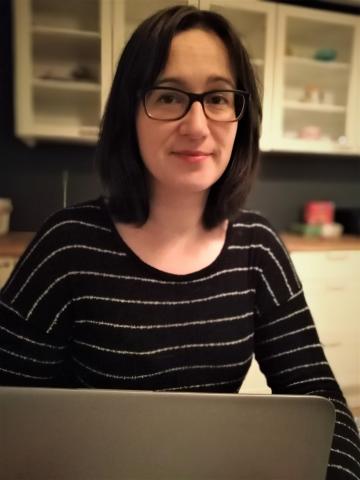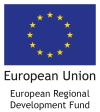How to build a new programme - Challenges and opportunities
Wednesday, December 9, 2020 - 09:24
How to build a new programme for a new programming period? Does it continue the work of the previous programme? Or is it something totally new? How do you even start the process? And what is a NUTS classification? I was thinking about these questions when I started working with the Programming Team early this year as a newcomer to the programme. I did my practical internship period for my studies at the programme and after that, I got the opportunity to join the Programming Team. This kind of opportunity comes only once in seven years so of course, you do not say no to that. Now many months later I am much wiser, and I can answer these questions.
From my perspective the programming process started with getting to know the regulations, having the first JPC meeting and starting to compile the Regional Analysis. The Regional Analysis is a document in which information is collected from Central Baltic programme regions about different sectors (e.g. economy, social, education, environment, transport). The analysis gathers the common characteristics, challenges and opportunities of the region and it is one of the building blocks of the programme. Also, the programme priorities are based on the challenges brought up at the analysis.
The first stop preparing the analysis was Eurostat. Eurostat is the statistical office of the European Union that contains uniform and comparable information on European Union countries and NUTS regions. The Central Baltic programme area consists of 27 NUTS 3 regions, so it was clear that I needed to dig the information based on the classification. There are three levels of NUTS, for example from Sweden NUTS 1 is Östra Sverige, NUTS 2 is Småland med Öarna and NUTS 3 in Uppsala län.
The preparations of the Regional Analysis were going full speed when COVID-19 came to the Central Baltic programme region. At first, it seemed that all programme staff would work remotely for a while but after a few weeks, it was clear that remote work would be a new reality. The shift to teleworking went smoothly and it didn’t have an effect on writing the Regional Analysis, but the pandemic did have an effect on the content. It became clear that the impact is and will be huge and it could not be ignored even though the programme doesn’t address directly on the effects of the pandemic.
So, what is going on in the Central Baltic region despite the pandemic? The analysis is showing many good developments in the area. Such as a decrease in unemployment, risk of poverty is getting lower, GDP is growing, high level of tertiary education attainment and competitiveness of the region is growing. In addition to good development, there are also some challenges. The population is getting older and this causes growth in dependency ratio, gender pay gap is over 10% in every country, rural and isolated areas like islands are difficult to access and the Baltic Sea is still heavily polluted.
The answer to the question is the new programming period something totally new is yes and no. The priorities will be chosen from new policy objectives offered by the European Commission and some procedures will change but good lessons learnt and experience will be transferred from the current period to the new one. It makes total sense to continue the good work and cooperation in the regions to benefit all the people who live in the Central Baltic programme area.
Päivi Kukkonen/ Central Baltic programme planner
From my perspective the programming process started with getting to know the regulations, having the first JPC meeting and starting to compile the Regional Analysis. The Regional Analysis is a document in which information is collected from Central Baltic programme regions about different sectors (e.g. economy, social, education, environment, transport). The analysis gathers the common characteristics, challenges and opportunities of the region and it is one of the building blocks of the programme. Also, the programme priorities are based on the challenges brought up at the analysis.
The first stop preparing the analysis was Eurostat. Eurostat is the statistical office of the European Union that contains uniform and comparable information on European Union countries and NUTS regions. The Central Baltic programme area consists of 27 NUTS 3 regions, so it was clear that I needed to dig the information based on the classification. There are three levels of NUTS, for example from Sweden NUTS 1 is Östra Sverige, NUTS 2 is Småland med Öarna and NUTS 3 in Uppsala län.
The preparations of the Regional Analysis were going full speed when COVID-19 came to the Central Baltic programme region. At first, it seemed that all programme staff would work remotely for a while but after a few weeks, it was clear that remote work would be a new reality. The shift to teleworking went smoothly and it didn’t have an effect on writing the Regional Analysis, but the pandemic did have an effect on the content. It became clear that the impact is and will be huge and it could not be ignored even though the programme doesn’t address directly on the effects of the pandemic.
So, what is going on in the Central Baltic region despite the pandemic? The analysis is showing many good developments in the area. Such as a decrease in unemployment, risk of poverty is getting lower, GDP is growing, high level of tertiary education attainment and competitiveness of the region is growing. In addition to good development, there are also some challenges. The population is getting older and this causes growth in dependency ratio, gender pay gap is over 10% in every country, rural and isolated areas like islands are difficult to access and the Baltic Sea is still heavily polluted.
The answer to the question is the new programming period something totally new is yes and no. The priorities will be chosen from new policy objectives offered by the European Commission and some procedures will change but good lessons learnt and experience will be transferred from the current period to the new one. It makes total sense to continue the good work and cooperation in the regions to benefit all the people who live in the Central Baltic programme area.
Päivi Kukkonen/ Central Baltic programme planner



